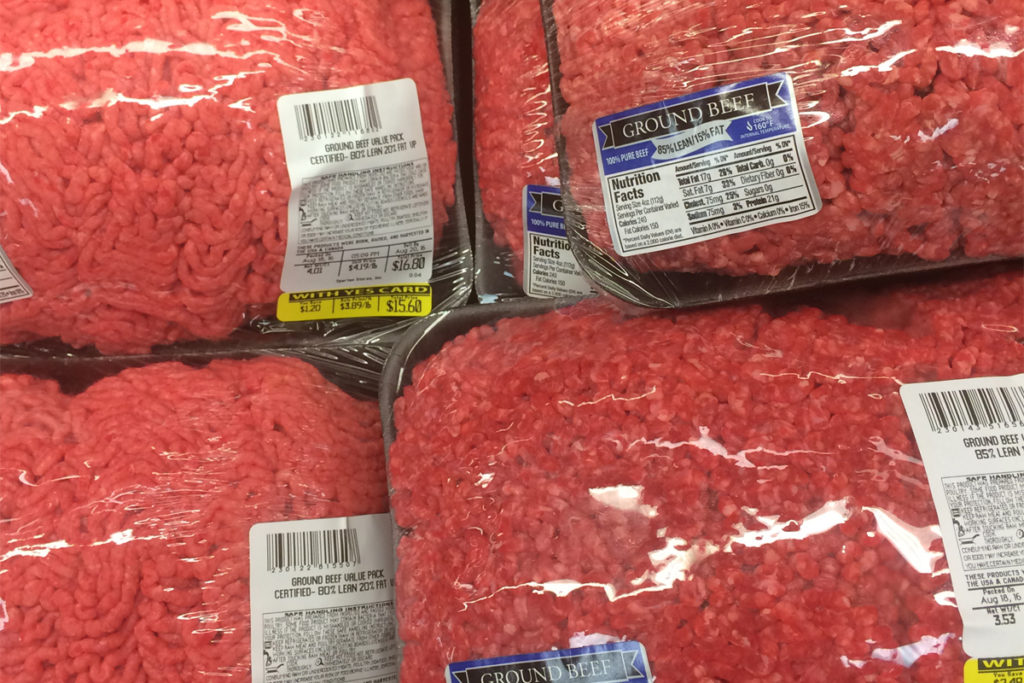Meat and American Ancestor Memory

One thing COVID-19 has done is make it a good time to discuss America’s ridiculous obsession with meat. The terrible conditions of the meatpacking plants that long predate the pandemic, but which we didn’t care enough to do about because we couldn’t see what was happening and didn’t really want to anyway.
One of the most ridiculous manifestations of this meat obsession, particularly among men, is the Paleo diet. Not only is this diet simply ridiculous on the face of it as a healthy way to live, it also is popular only because it plays into Americans’ fetish about MEAT ROAR MEAT!!! Unlike those wussy liberals, we can eat MEAT ROAR MEAT and drive our trucks and roll some coal on the Prius driving vegetarian. While there may be much to say for a low-carb diet, not that I would ever follow such an unfortunate idea, the Paleo diet is far more a cultural phenomenon than anything to do with health.
Moreover, the idea that our distant ancestors ate MEAT ROAR MEAT is absolutely laughable. They didn’t have the technology to eat large amounts of meat. They were just trying to scrounge for enough berries and plants and bits of meat when they could to survive, largely insects, though this all depends on time and place.
Collectively, anthropologists have spent many a career attempting to hone in on the diets of our most recent ancestors. Typically, they focus on our stone age (AKA Paleolithic) human ancestors or our earlier pre-human, hominid ancestors. Even if we just consider our stone age ancestors—those folks whose stories span the time between the first stone tool and the first agriculture—the sides of the debate are polarized. If you listen to one camp, our ancestors got most of their nutrition from gathered fruits and nuts; successful kills of big mammals may have been more of a treat than an everyday reality. A 2012 paper suggests that even Neanderthals—our north country cousins and mates—may have eaten much more plant material than previously suspected. Meanwhile, more macho camps of academics paint a picture of our ancestors as big, bad, hunters, who supplemented meaty diets with the occasional berry “chaser.” Others suggest we spent much of our recent past scavenging what the lions left behind, running in to snag a half-rotten wildebeest leg when the fates allowed. In other words, although “Paleolithic” diets in diet books tend to be very meaty, reasonable minds disagree as to whether ancient, Paleolithic diets actually were. Fortunately, new research suggests answers (yes, plural) to the question of what our ancestors ate.
…
If you want my bet, the majority of the recent (last few million years) changes in our guts and digestion will prove to have had more to do with processing food and, later, agriculture rather than with meat-eating per se. As hominids and/or humans switched to eating more meat, their bodies might have evolved so to be able to better digest meat. I could be convinced. But, we know our human digestive systems DID evolve to deal with agriculture and the processing (fermenting and cooking) of food. With agriculture, some human populations evolved extra copies of amylase genes, arguably so as to better be able to deal with starchy foods. The case of agriculture is the most clear. With agriculture, several human populations independently evolved gene variants that coded for the persistence of lactase (which breaks down lactose) so as to be able to deal with milk, not just as babies but also as adults. Drinking milk of another species as an adult is weird, but some human populations have evolved the ability. With agriculture, the species in our guts seem to have evolved too. Some populations of humans in Japan have a kind of bacteria in their guts which appears to have stolen genes for breaking down seaweed, a foodstuff that became popular along with the post-agricultural Japanese diet. With agriculture, human bodies changed so as as to cope with new foods. Our bodies bear the marks of many histories. As a result, if you want to eat what your body “evolved to eat” you need to eat something different depending on who your recent ancestors were. We already do this to some extent. If your ancestors were dairy farmers, you can drink milk as an adult without trouble, you’ve “got lactase.” But if they were not, you tend to get diarrhea when you drink milk and so you probably avoid the stuff (lest your friends avoid you). But the truth is, for most of the last twenty million years of the evolution of our bodies, through most of the big changes, we were eating fruit, nuts, leaves and the occasional bit of insect, frog, bird or mouse. While some of us might do well with milk, some might do better than others with starch and some might do better or worse with alcohol, we all have the basic machinery to get fruity or nutty without trouble. And anyway, just because some of us do better with milk or starch or meat than others doesn’t mean such foods are good for us, it just means that those individuals who couldn’t deal with these foods were more likely to die or less likely to mate.
Any paleo diet that doesn’t include eating almost all insects for that protein is as authentic toward the past as loser Civil War reenactors not eating dead and bloated horses.


